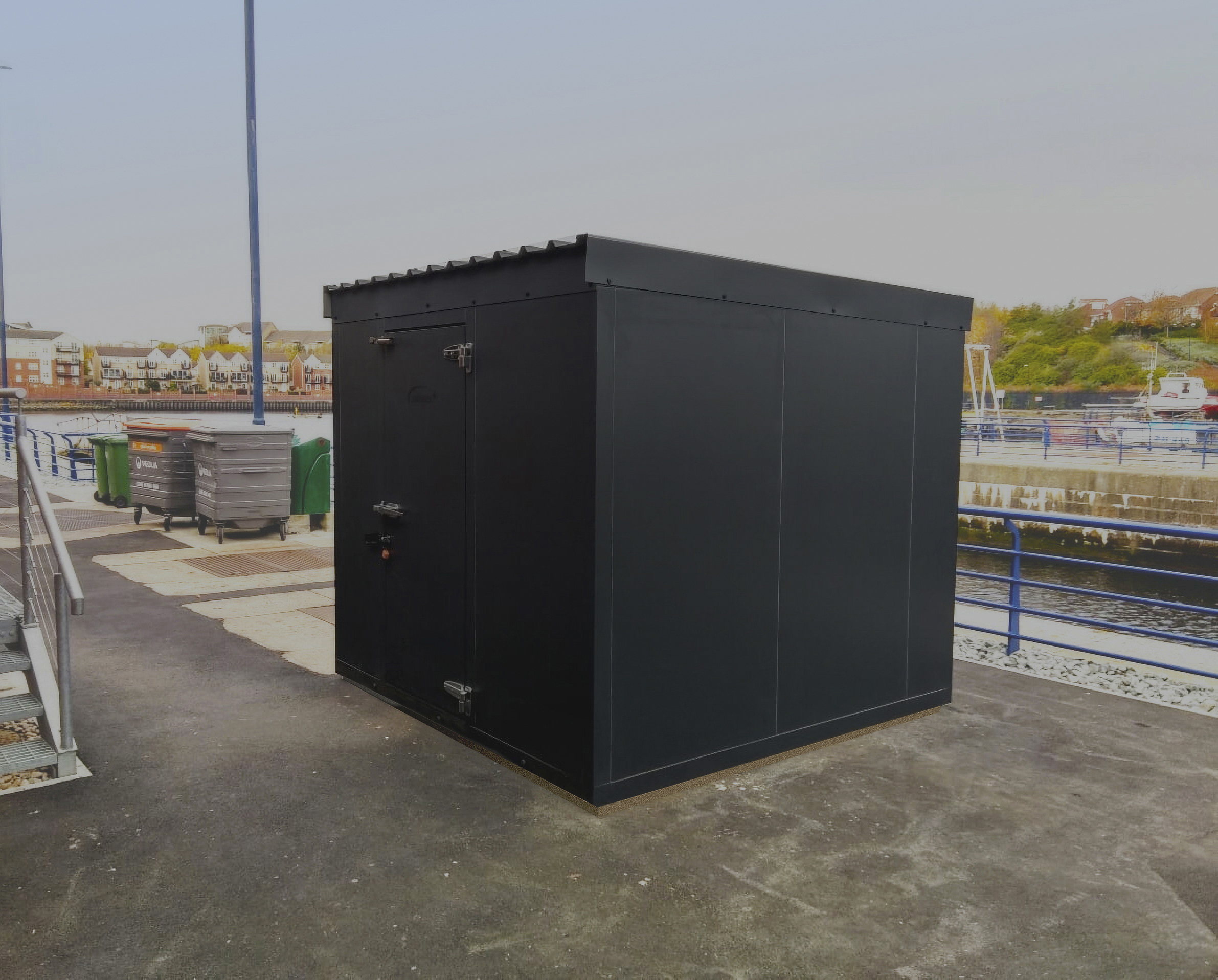Williams says weatherproof coldrooms can help meet small kitchen ‘20:20 vision’
The drive to reduce the size of restaurant kitchens shows no sign of abating. Williams says one answer is to put some of the cold storage outside the kitchen – in fact, outside the building. As more operators consider the option, Williams is even offering outdoor coldrooms in a range of colours and finishes, so that they can blend into the environment more easily.
“Operators want to make the most use of the space they have to serve more customers, so the dining room is being increased and the kitchen reduced,” says Malcolm Harling, sales and marketing director of Williams. “That creates a dichotomy: how do you serve more customers from a smaller kitchen?
“FEA (the Foodservice Equipment Association) calls this the small kitchen 20:20 vision: 20% more productivity from 20% less space. Equipment upgrades can take you so far, but there comes a time when you need to think outside the box – or, in this case, outside the kitchen.”
More and more operators are taking advantage of the idea of having a coldroom outside the building in, for example, a back yard or the corner of a car park. When specifying an external coldroom, they should be constructed on top of a purpose built concrete base that sits above ground, which allows water runoff, with internal flooring also installed as standard. An important element to external coldrooms is being completely weatherproof, as models designed to be sited indoors won’t cope with the heat, cold, rain or snow.
Williams outdoor coldrooms have exteriors made from HPS plastisol coated galvanised steel, which is hardwearing and weatherproof. Their flat ceiling is overclad with an angled sheet to provide run off to the guttering.
An added bonus with outdoor coldrooms is that they are often easier to install than indoor versions. For one thing, there are less likely to be access issues or any need to disturb the kitchen operation. For another, there’s no need for long pipe runs to connect the coldroom to the parts of the refrigeration system that are sited outside. They can simply be installed next to the coldroom itself.
The one downside, of course, is that staff have to go outside to access the refrigerated or frozen storage. Some operators are getting round that by installing the coldroom on an exterior wall adjacent to the kitchen – and then knocking a door through, so that access is directly from the kitchen. Staff don’t even realise they are going outside!
As for the colour, Harling says. “The most popular option is brown, as it tends to blend in better than, for example, white. However, there’s a varied choice, with the other most popular alternatives being forest green, black and gun metal grey.”
Williams exterior coldrooms are built of modular panels featuring high performance insulation. The panels comprising the floor, walls and roof have tongue and groove joints that are camlocked together to form a robust structure and a tight thermal envelope that ensures constant temperature control. The modular construction means they can be designed to fit a variety of sizes and shapes, helping take maximum advantage of available space. Dual temperature models, for, for example, both chilled and frozen storage, are also available.
The cost for an exterior coldroom will depend on a variety of factors, including the size, ease of access, availability of services and the state of the site.
Williams Refrigeration offers a comprehensive range of commercial refrigeration including gastronorm cabinets and counters, specialist bakery equipment, coldrooms, merchandisers and blast chillers.
To learn more about Williams extensive product range visit www.williams-refrigeration.co.uk.

